Here’s a fun exercise I’m doing. I invite you to do it, too! The intention here is push oneself to think in non-anthropocentric terms about what life might be like under other conditions.
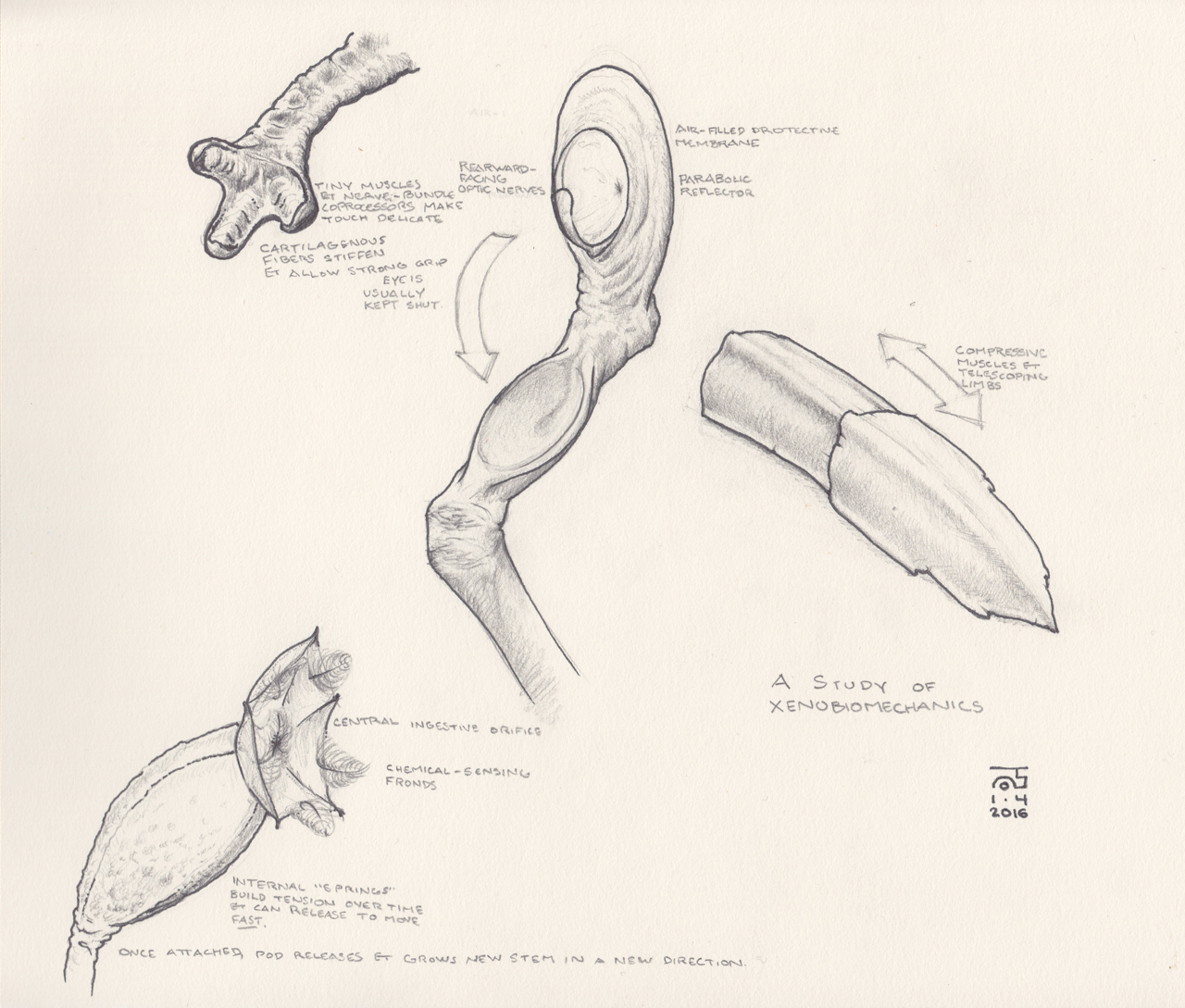
- Devise an evolutionary specification (that is, the way we do in fiction, where we need an alien to be a certain way, not the way it happens in nature, where successful reproduction is the only standard). Something like: “The aliens I’m interested in can manipulate objects, sense objects, and move.”
- Consider a single structure — not a whole creature — that evolved other solutions than we did to the more basic questions than we did, here on earth. Like, we evolved jaws from the gill structures on fish. Imagine if gill structures hadn’t evolved, or perhaps some other structure was more effective than primitive jaws, and so jaws never had a chance to take off.
- What do those structures look like? How do they affect the lives of the creatures that grow them? If they have a culture, how do they affect their culture?
- Leave it there! Design another structure for a different environment!
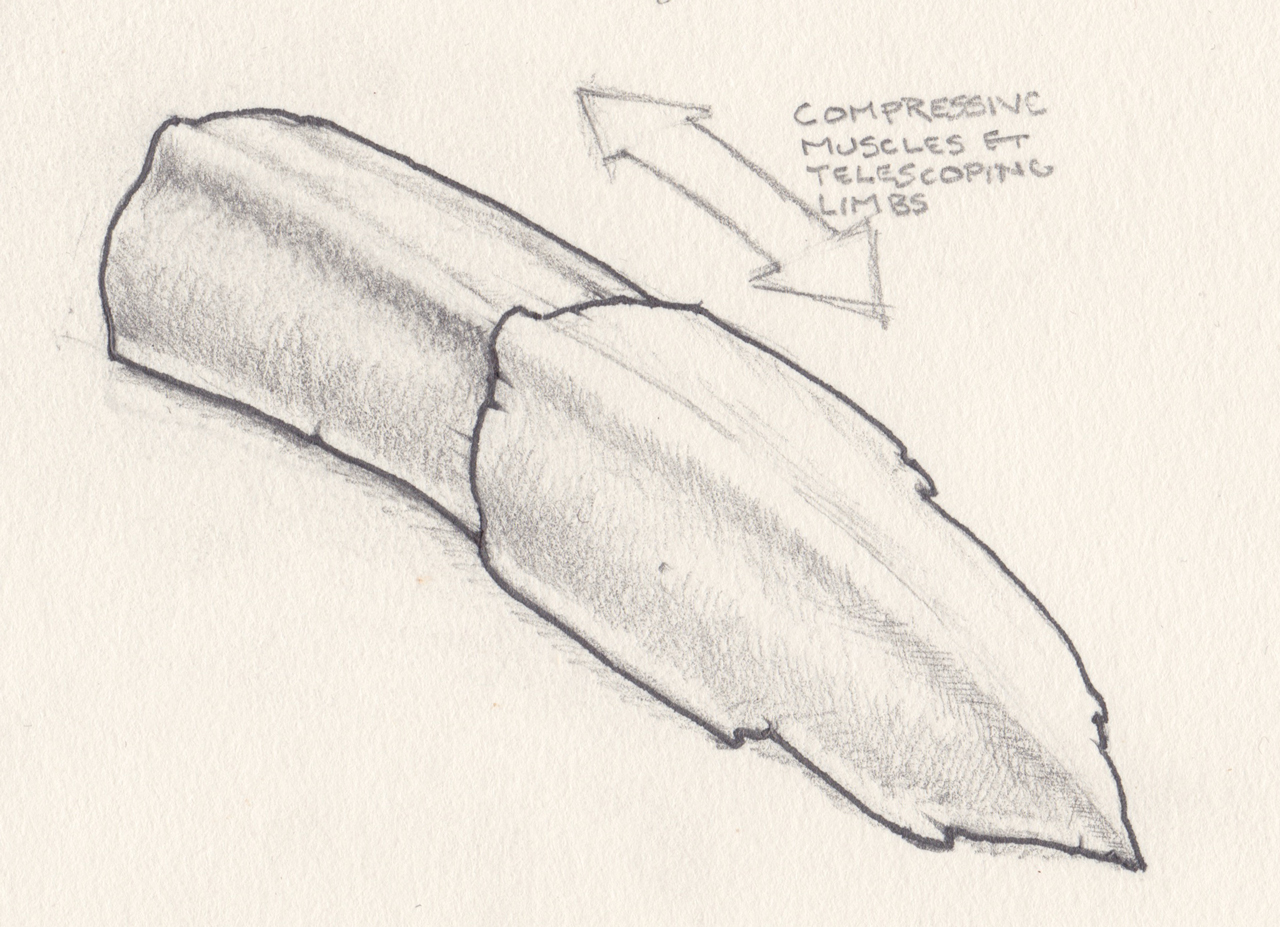
These creatures use their feathery tendrils to smell an attractive, colonial microbe-infused rock, then detach the stalk. As they slurp their way through the surface of the rock, they grow a new stalk, which grows a new pod, which smells a new rock, and they continue. On this planet, there’s no clear distinction between plant and animal as there (usually) is on Earth; rather, motile structures evolved early on, and most life forms have at least a limited form of movement.
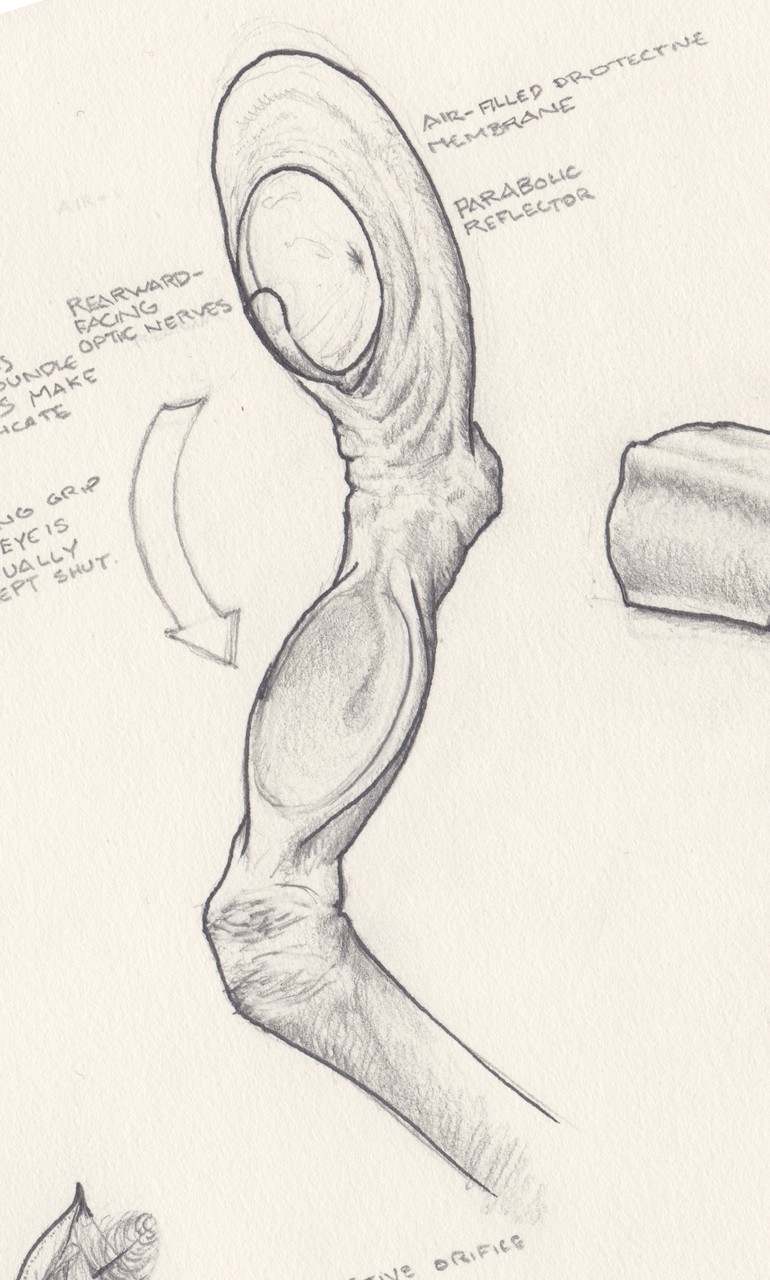
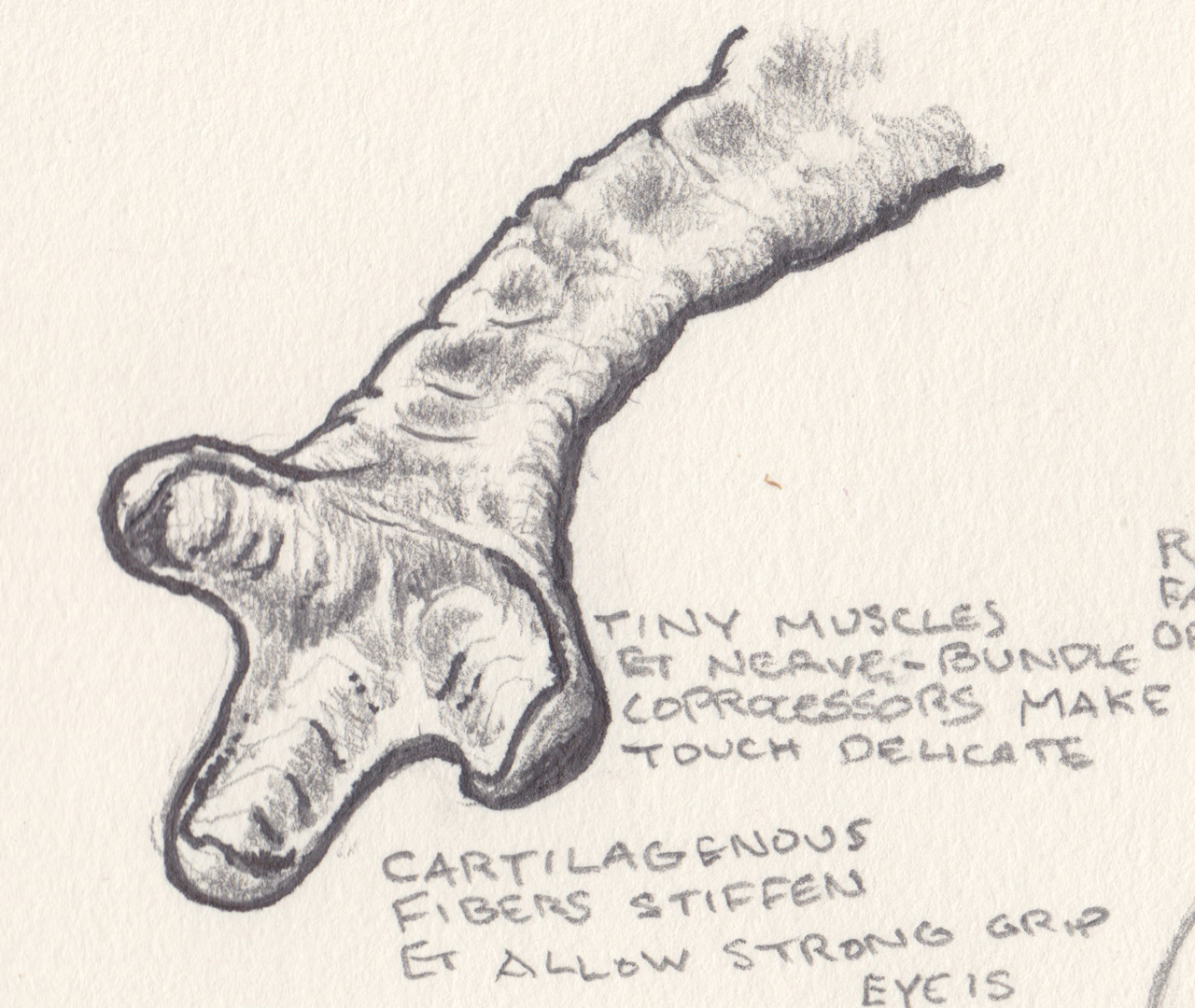

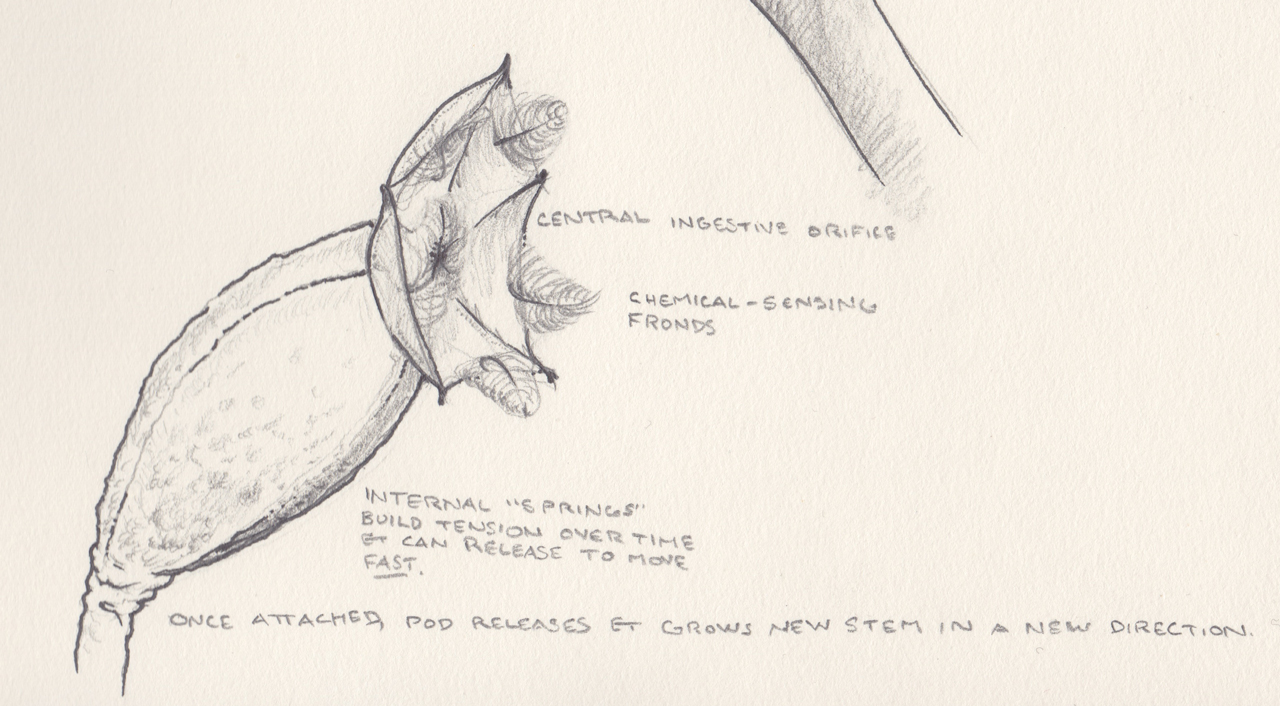
Here’s an idea I’ve been playing with: animals descended from aquatic ancestors that had radial symmetry, but when they became land dwelling had to modify the basic body plan to become secondarily bilateral. So you still see the radial pattern in their embryos but as they develop one side becomes the front, the opposite side the rear, and so forth.
That’s a really neat idea! It reminds me of quadcopter evolution over the last few years: in general, they’re radially symmetrical, but ones that are built for POV racing have a more linear, more aerodynamic shape because they reliably have a “forward”.
So, we might have a starfish shape where all limbs are identically endowed with sense organs, but when it emerges from the water as a nymph, one of the legs becomes more sensitive to light, while the others become legs. It might even be, whichever one gets walked on least, grows eyes.
I love the subtlety and liveliness of the drawings!
Thanks, dad!